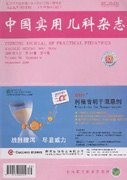Autism spectrum disorder(ASD) is a group of multi-factor brain development disorders. At present,ASD treatment is still based on behavioral intervention,for there are no specific drugs. ASD comorbidities are extremely common in children with ASD,and the presence of comorbidities has an important impact on the treatment and prognosis of ASD. In recent years,the etiology and behavioral intervention of ASD has become a research hotspot at home and abroad,but there are few studies on comorbidity and drug intervention. Therefore, we summarize relevant literatures at home and abroad, hoping to be helpful for clinical research on ASD comorbidity and drug treatment.

